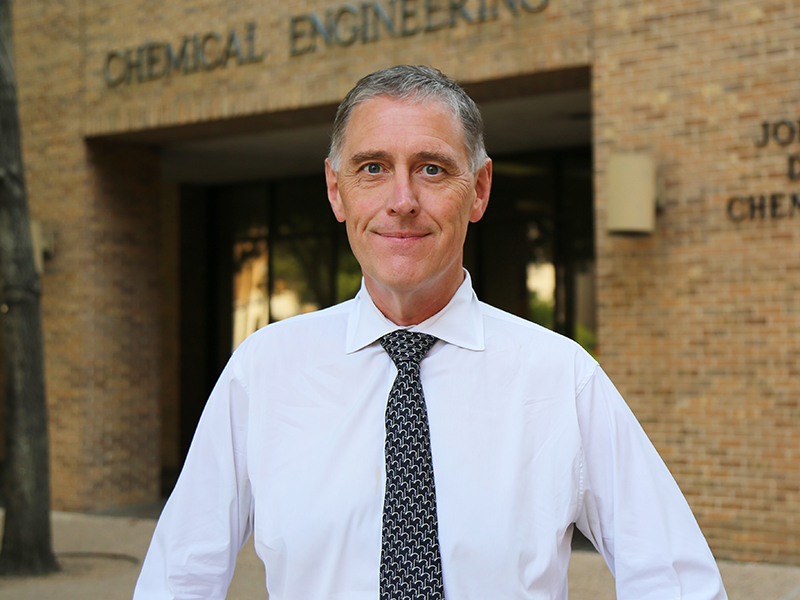‘Accidental’ Discovery of Polymer Could Have New Applications in Food, Drug Packaging
Next time you’re at the grocery store buying a pound of ground beef or a bottle of aspirin, or at the electronics store purchasing a computer, what you may not realize is that a recent discovery at Case Western Reserve University may help keep those food and drugs safer and fresher longer and electronic equipment dryer and more secure than ever before – all at less cost.
The finding – which involves a nanotechnology-based technique to more effectively block the transport of damaging gases through a polymer, making it stronger while using less material – was made in the labs of the NSF Center for Layered Polymeric Systems (CLiPS) at the Case School of Engineering. The findings are published in the Feb. 6 issue of the journal Science. Benny Freeman, a University of Texas at Austin chemical engineering professor, was co-author of the study.
“The work reported in Science takes a step toward developing more flexible, optically transparent, ultra-high barrier polymers for several different applications,” said Anne Hiltner, lead author of the study and the Herbert Henry Dow Professor of Science and Engineering at Case Western Reserve. She also serves as lead investigator and co-director of CLiPS.
The team found –by accident, according to Hiltner – that when confined as nanolayers, polyethylene oxide (PEO) crystallizes as a single layer, resembling very large, impermeable single crystals that reduce by 100 times the amount of gas permeability in all kinds of polymer-based applications. When a crystallizable polymer is confined to such thin layers, it surprised the researchers by spontaneously organizing themselves into a nearly perfect crystalline packing of the polymer chains in each thin layer, Hiltner says.
“To find something as unexpectedly as we did, that’s the kick you get out of exploring,” Hiltner said.

Benny Freeman, professor in the Cockrell School of Engineering’s Department of Chemical Engineering
This spontaneous organization of a polymer melt into large (in terms of length and width), nearly perfect, so-called single crystals has not been observed before this study, according to Freeman, who holds the Kenneth A. Kobe Professorship in Chemical Engineering at The University of Texas at Austin.
“The ability to produce literally kilometers of film containing single crystals of polymer is unprecedented,” he said.
Crystalline polymers, such as polyethylene, polypropylene and nylon, have been broadly used as gas barrier films in food, medicine and electronics packaging, benefitting from their low cost, easy processing and mechanical toughness.
Using an innovative layer-multiplying co-extrusion process that takes two polymer melts and combines them as layers, multiplies the layers to four, and doubles that again as many times as desired, the research team discovered that a new structure emerges as confined polyethylene oxide (PEO) layers are made progressively thinner, thereby saving material.
Crystalline regions of polymers are areas where the atoms in polymer chains line up relative to one another in a rigorous and well-defined, ordered pattern, much like water molecules align next to each other in a well-defined pattern in ice (which is, in fact, crystalline water). Because the atoms are closely aligned to each other in a regular pattern, crystalline regions of polymers do not permit the transport through them of even the smallest gas molecules, such as oxygen or carbon dioxide. Thus, crystalline regions of polymers decrease the permeability of gases through such polymers – that is, crystalline regions improve barrier properties of polymers.
Polymers are already used in many applications where their ability to keep wrapping tightly sealed is critically important to the performance of the application, such as in food and medicine packaging. Yet there are emerging technologies, such as flexible electronic displays, where the barriers of current polymers are not sufficient to meet the needs of the application.
Established by a five-year, $19 million grant from the National Science Foundation, the Center for Layered Polymeric Systems is a powerful new national presence for research at the intersection of polymer science and engineering and the physical sciences (called “Polymers Plus.”) It also plays an important role in educating a diverse American workforce to meet the challenges of emerging multidisciplinary polymer-based technologies. To create CLiPS, Case Western Reserve University partnered with the University of Texas at Austin, Fisk University, the University of Southern Mississippi and the Naval Research Laboratory.
